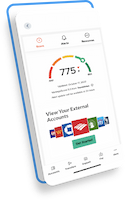If you’re in the market to buy a house of your very own, debt can feel like an anchor: along with the monthly struggle to make ends meet, there’s also your DTI (debt-to-income) ratio to worry about, along with the effect revolving debt can have on your credit score and credit history.
For many homebuyers, it may be a good idea to pay off debt before applying for a mortgage. Getting your finances in order could mean a lower interest rate, higher loan limit, and better terms overall.
But how do you do it? Good news: although it’ll definitely take some time and elbow grease, debt payoff isn’t impossible. Here’s where to start.
1. If you’ve got credit card debt, start there.
While any kind of debt can have an impact on your credit score, credit card debt can be especially slippery: compound interest means your balance can ratchet upwards in a flash, and the interest rates tend to be relatively high compared to other types of debt (like, say, student loans or an auto loan).
So if you’ve racked up some debt on plastic, that might be a good place to start when it comes to dialing it back down again. Curtail your use of credit cards and make a point to pay more than the minimum monthly payment, perhaps choosing one card at time to focus those extra payments toward. Once you’ve completed the project, vow never to spend more than you can afford to pay off in a billing cycle — that way, you’ll never pay interest, while still reaping all the benefits credit cards can offer.
2. Get snowy with it.
Yes, you read that correctly. Hear us out.
All debt repayment is, essentially, about focusing as much extra money as possible toward making extra payments. But there are a couple of strategies that can help people get organized and motivated — both of which have snowy metaphors.
One approach is the avalanche method. With this strategy, you write a list of all of your debts in order of their interest rates. Then, you tackle the one with the highest interest rate first, paying as much toward it as you can (while, of course, still paying your bills and making minimum payments on the other debts, as well as ideally maintaining an emergency fund).
The debt avalanche method can clear up extra funds for future debt repayment and other goals; the less you’re paying in interest, the more money you’ll have to put toward those other expenses. However, if your highest-interest debt is an especially high balance, starting with it can feel overwhelming — thus, enter the snowball method.
The debt snowball method also involves writing a list of your debts, but this time in order of their balance. Making minimum payments on all debts, you’ll funnel those extra funds toward the smallest-balance debt and move up from there. This approach can be especially motivating once you feel the satisfaction of paying off an account in full.
There are, of course, plenty of other debt repayment plans and strategies to look into, as well as professional credit counseling. Still, these two methods have a decent track record and could be a start to paying off your debt faster.
3. Consider consolidation.
Going into more debt to get out of debt may sound counterintuitive — but that’s exactly how debt consolidation works, and for some people, it’s a godsend.
Basically, you take out one, larger personal loan or line of credit, which you then use to pay off all of the smaller balances. You may also be able to use a credit card balance transfer, ideally with a promotional 0% interest rate. While your overall amount of debt will stay the same, your repayment strategy will be simplified — now you’ll just have one bill each month to worry about — and depending on the rates of your existing debts and the new consolidation loan, you may save money over time, as well.
Still, this approach could take a while to show up on your credit report and improve your credit score, so it’s best to get started as soon as possible if buying a home is on the horizon.
Depending on the specifics of your financial profile, you may qualify for a mortgage loan even with a substantial amount of existing debt. It’s all about finding a lender who’s willing to consider your application holistically.
Quontic’s Community Development Loans, or CDLs1, are designed with non-traditional borrowers in mind, and may help those who’ve otherwise been denied achieve the mortgage loans they deserve. The minimum FICO score is an achievable 6601, and we accept applicants whose income documentation looks a little different from the typical borrower’s. We can help you refinance an existing property or apply for a brand-new mortgage, and you don’t have to be debt-free to qualify.
Still have questions? We’re standing by to answer them — so contact one of our mortgage specialists today!
Disclaimer:
1All lending products are subject to approval. Rates, program terms & conditions are subject to change without notice. Not all products are available in all states or for all amounts. This does not represent an offer to enter into a loan agreement. Other requirements, restrictions & limitations apply. Information is accurate as of March 8, 2022 & is subject to change without notice.





